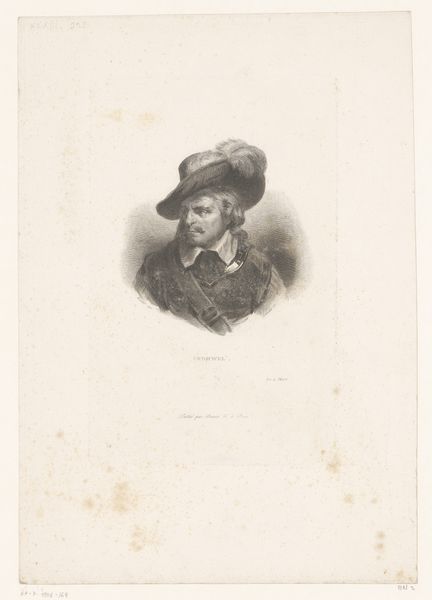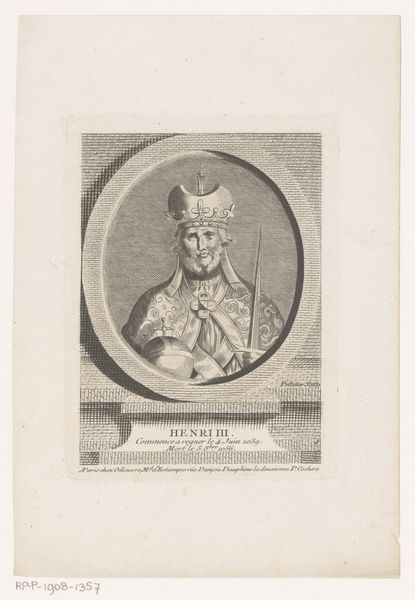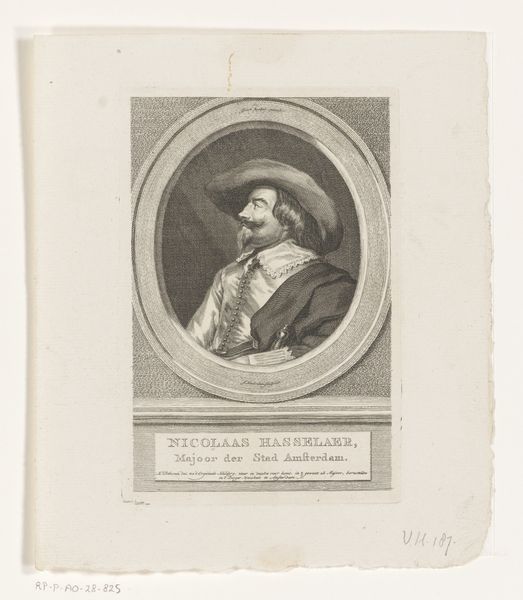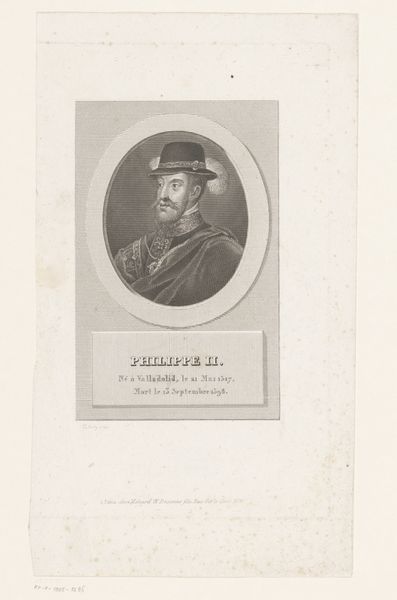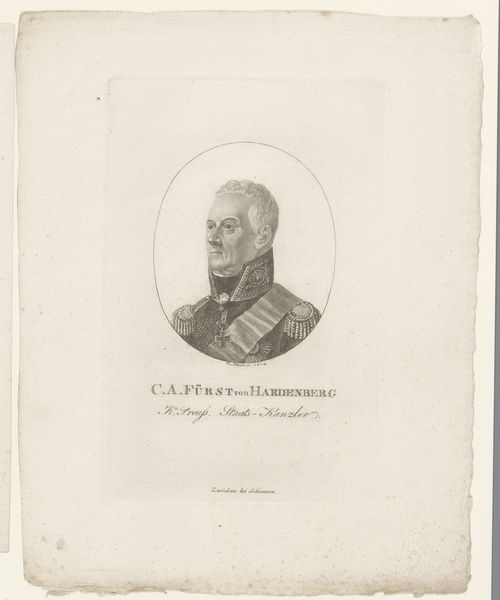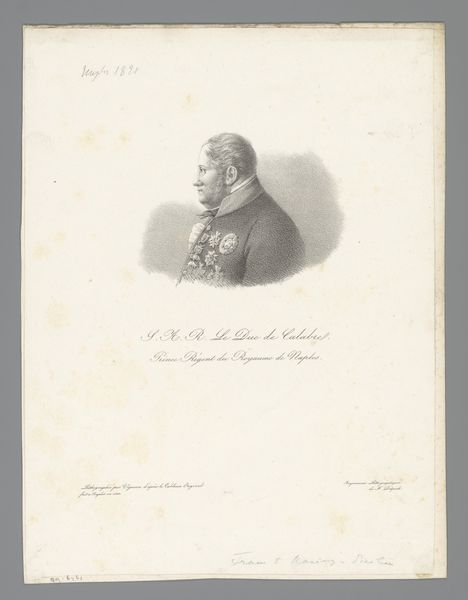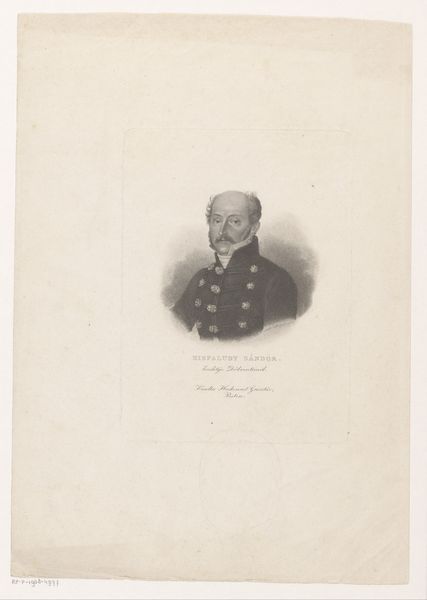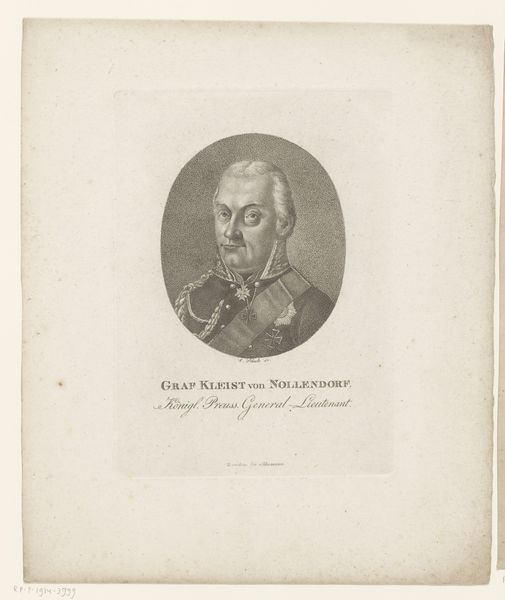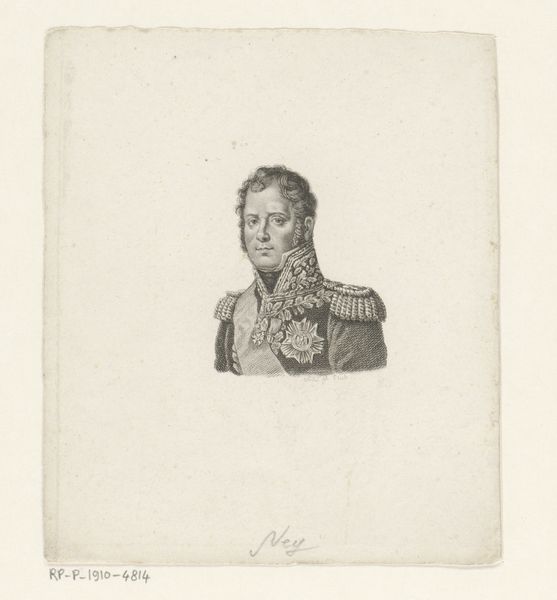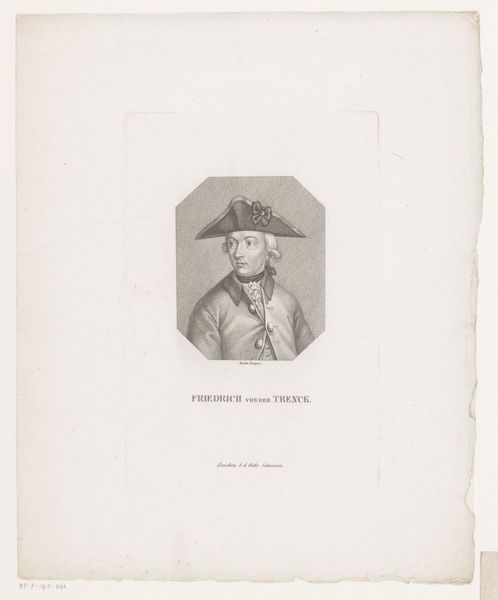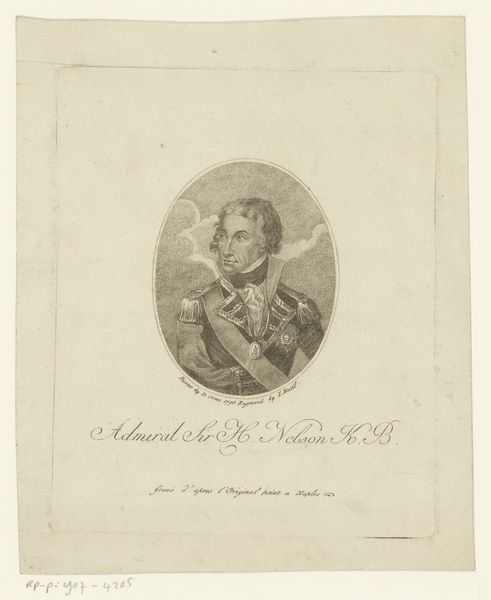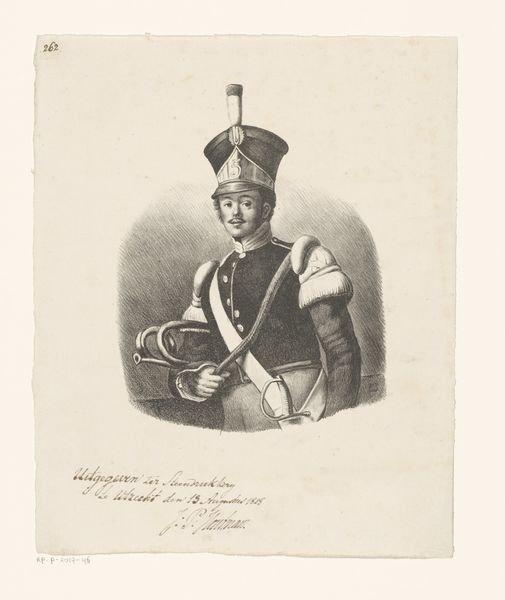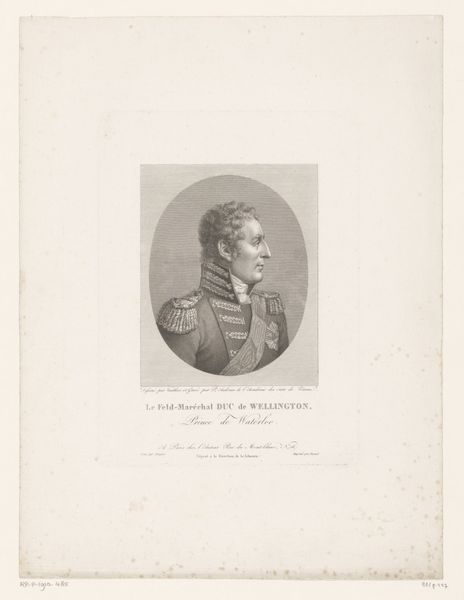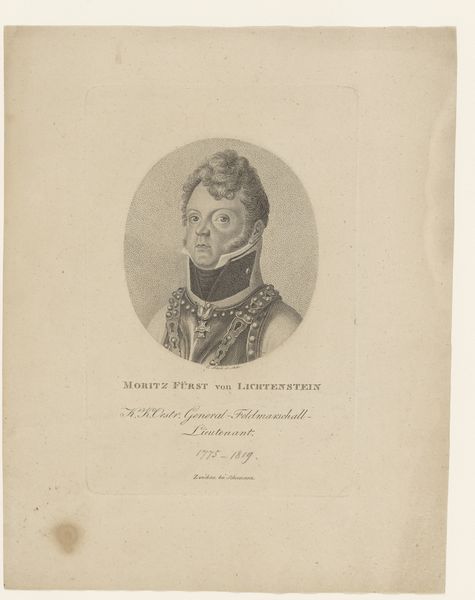
print, engraving
portrait
neoclacissism
old engraving style
history-painting
engraving
Dimensions: height 177 mm, width 113 mm
Copyright: Rijks Museum: Open Domain
Curator: Looking at this engraving, titled "Portret van Ferdinand von Schill," made sometime between 1804 and 1843 by Friedrich August Brückner, what immediately strikes you? Editor: There's a sternness to it, wouldn’t you say? It is clean, and formal in its depiction, but somehow quite melancholy. I'm drawn to the texture, the way the engraving creates form. Curator: I find it illuminating to understand Schill as a figure of Prussian resistance against Napoleonic occupation. It offers insight into post-revolutionary power structures, and the identity of the military in the shifting dynamics of Europe. This is not simply a portrait; it’s a statement about nationalism and resistance in the wake of revolution. Editor: Absolutely. Think of the physical labor—the cutting of lines into the plate, the controlled application of acid, the repetitive action of the printing press. Each pull would carry Schill's image. Curator: Indeed, and how it then disseminates that ideology! Engravings like this were often reproduced, offering ways to engage and to reify that resistance in an increasingly literate public. It helped to bolster resistance movements by presenting him almost as an icon. Editor: And it's not just ideology. The paper itself—where did it come from? How was it processed? Was it linen? Was it wood pulp? The inks, too. This image carries the marks of many hands beyond Bruckner's. Curator: Absolutely! So, in a way, the material provides context for its existence—an insight that intersects beautifully with the themes of its depiction. This brings to the surface layers of meaning within the portrait of an icon that otherwise would be obscure to the everyday viewer. Editor: Yes, seeing beyond the representational to understand production reveals the dense web of historical forces involved. It enriches my interpretation significantly, and draws me closer to the man himself.
Comments
No comments
Be the first to comment and join the conversation on the ultimate creative platform.
